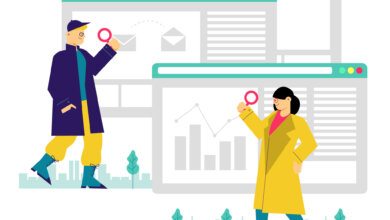One effective and often overlooked method to achieve significant cost savings is through commercial lighting upgrades. Businesses, both small and large, consume a substantial amount of energy for lighting. This is especially true in areas where outdoor lights play a crucial role in security and presentation. With the evolution of lighting technology, energy-efficient solutions have emerged as a powerful tool for reducing operational expenses.
This blog explores how energy-efficient commercial lighting can reduce operational costs for businesses, improve productivity, and support environmental sustainability.
The Impact of Lighting on Business Operations
Lighting plays a vital role in every commercial setting. From offices and warehouses to retail stores and outdoor areas, adequate lighting ensures safety, enhances aesthetics, and boosts employee productivity. However, traditional lighting systems often lead to high energy consumption and increased maintenance costs.
Switching to energy-efficient lighting solutions can significantly reduce these burdens. Whether it involves upgrading fluorescent bulbs to LED or installing smart outdoor lights, the impact on operational costs is immediate and measurable.
Understanding Energy-Efficient Lighting
Energy-efficient lighting refers to systems that provide the same or improved levels of illumination while using less electricity. Common examples include LED lights, compact fluorescent lamps (CFLs), and motion-sensor lighting systems. These options offer longer lifespans, reduced heat output, and significantly lower energy usage compared to traditional incandescent or halogen bulbs.
Some of the key characteristics of energy-efficient lighting include:
- Lower Wattage with Higher Output: LEDs can produce more lumens per watt, meaning more brightness with less power.
- Longer Lifespan: Energy-efficient bulbs can last up to 25 times longer than traditional bulbs.
- Eco-Friendly: These lighting options contain fewer hazardous materials and are easier to recycle.
Financial Benefits of Energy-Efficient Lighting
Reduced Energy Bills
The most direct way energy-efficient lighting reduces operational costs is by lowering energy bills. Traditional lighting can account for up to 40% of a business’s electricity usage. By replacing outdated lighting systems with efficient alternatives, businesses can see a reduction of up to 70% in lighting-related energy consumption.
For example, switching to LED lights in a commercial warehouse can save thousands of dollars annually. These savings multiply when large-scale installations or outdoor lights are involved.
Lower Maintenance Costs
Energy-efficient lighting systems last significantly longer than traditional bulbs. This extended lifespan translates to reduced maintenance and replacement costs. Businesses don’t need to hire technicians frequently or invest in large inventories of replacement bulbs.
This is especially important for facilities where lighting is difficult to access or requires special equipment for maintenance, such as high ceilings, signage, or outdoor lights in tall fixtures.
Government Incentives and Rebates
Many governments offer incentives to businesses that invest in energy-saving technologies. These can come in the form of tax credits, rebates, or grant programs. Participating in these initiatives can further reduce the initial investment cost of upgrading lighting systems.
Businesses that prioritize energy efficiency may also receive favorable terms from utility companies or be eligible for sustainability certifications that enhance brand reputation.
Operational and Productivity Advantages
Improved Employee Productivity
Lighting affects employee mood, alertness, and overall productivity. Poor lighting can cause eye strain, fatigue, and reduced concentration. Energy-efficient lighting solutions are designed to offer better quality light with adjustable brightness and color temperatures that can enhance employee well-being.
For example, LEDs can mimic natural daylight, helping to regulate circadian rhythms and improve focus. This can lead to fewer sick days and improved work performance across departments.
Enhanced Safety and Security
Well-lit environments are crucial for safety, particularly in industrial settings and during night shifts. Efficient commercial lighting improves visibility, reducing the likelihood of accidents or security breaches. Motion-sensor lights and programmable timers ensure that areas are well-lit only when necessary, contributing to both safety and energy savings.
This is particularly relevant for outdoor lights, which provide security for parking lots, loading docks, and entryways.
Better Customer Experience
In retail and hospitality sectors, lighting plays a significant role in shaping customer perceptions. Bright, well-lit interiors and exteriors create a welcoming environment and positively influence purchasing behavior. Energy-efficient lighting ensures that businesses can maintain optimal lighting conditions without incurring high costs.
Smart Lighting Systems and Automation
Integration with Smart Technology
One of the most exciting developments in commercial lighting is the integration with smart technologies. Businesses can now install lighting systems that adjust based on occupancy, daylight availability, or time schedules.
Features of smart lighting systems include:
- Motion Sensors: Automatically turn lights on or off based on movement.
- Daylight Harvesting: Adjust indoor lighting based on the amount of natural light entering the space.
- Remote Control: Operate lighting systems via mobile devices or centralized control panels.
- Scheduling: Set lights to operate during specific hours to avoid unnecessary usage.
These technologies provide more control, optimize energy usage, and significantly reduce costs.
Data and Analytics
Modern lighting systems often come with analytical tools that provide insights into energy consumption, usage patterns, and potential inefficiencies. These insights help businesses fine-tune their operations and further reduce waste.
Environmental Benefits and Corporate Responsibility
Reduced Carbon Footprint
Energy-efficient lighting systems consume less electricity, which directly translates to reduced greenhouse gas emissions. This contributes to a lower carbon footprint for businesses and aligns with global efforts to combat climate change.
Sustainable Brand Image
More consumers are becoming environmentally conscious and prefer brands that demonstrate sustainability. Businesses that implement energy-efficient lighting and promote eco-friendly practices are likely to gain customer trust and loyalty.
By visibly using green technologies, including efficient outdoor lights, businesses can enhance their public image and differentiate themselves from competitors.
Implementation Tips for Businesses
Conduct a Lighting Audit
Before upgrading, it’s essential to understand the current lighting system. A lighting audit evaluates energy usage, identifies inefficiencies, and determines which areas require improvement. This information serves as the foundation for selecting appropriate energy-efficient solutions.
Set Clear Objectives
Businesses should define what they hope to achieve through the lighting upgrade—whether it’s cost savings, better lighting quality, or improved aesthetics. Clear goals will guide the selection of fixtures, bulbs, and control systems.
Choose the Right Lighting Solutions
Every commercial space has unique lighting requirements. Offices, warehouses, retail spaces, and outdoor areas demand different types of lighting. Selecting the right color temperature, lumen output, and beam angles ensures optimal performance and satisfaction.
Partner with Professionals
While some upgrades can be handled in-house, partnering with lighting experts ensures proper installation, compliance with building codes, and maximized efficiency. Professionals can also help with accessing government rebates and designing custom solutions.
Monitor and Maintain
Post-installation, it’s important to monitor lighting performance. Smart systems make this easy by providing real-time feedback. Regular maintenance, even for long-lasting systems, ensures continued performance and helps detect issues early.
Case Example: Warehouse Lighting Overhaul
A mid-sized logistics company decided to upgrade its warehouse lighting. The facility had over 300 traditional metal halide fixtures, consuming excessive energy and requiring frequent maintenance.
By switching to LED high-bay lights and installing motion sensors, the company achieved:
- A 65% reduction in energy usage
- A 90% drop in maintenance calls
- Improved visibility and worker satisfaction
- Faster operations due to better lighting
This example underscores how an initial investment in commercial lighting upgrades can lead to impressive operational improvements.
Final Thoughts
Energy-efficient lighting is more than just a way to cut electricity bills—it’s a strategic investment that impacts every area of a business. From lowering maintenance costs and boosting employee productivity to enhancing safety and reducing environmental impact, the benefits are far-reaching.
Businesses that adopt smart, energy-efficient commercial lighting solutions are better positioned to thrive in today’s competitive and sustainability-conscious market. Whether upgrading office interiors or installing new outdoor lights, the move toward efficiency is not just smart—it’s essential for long-term success.





